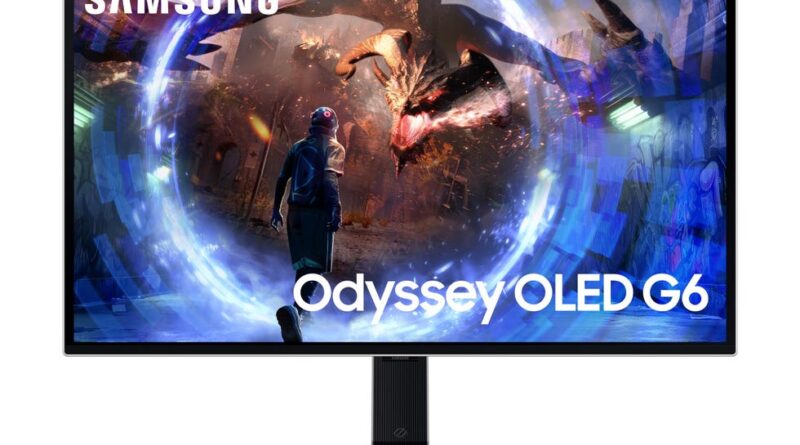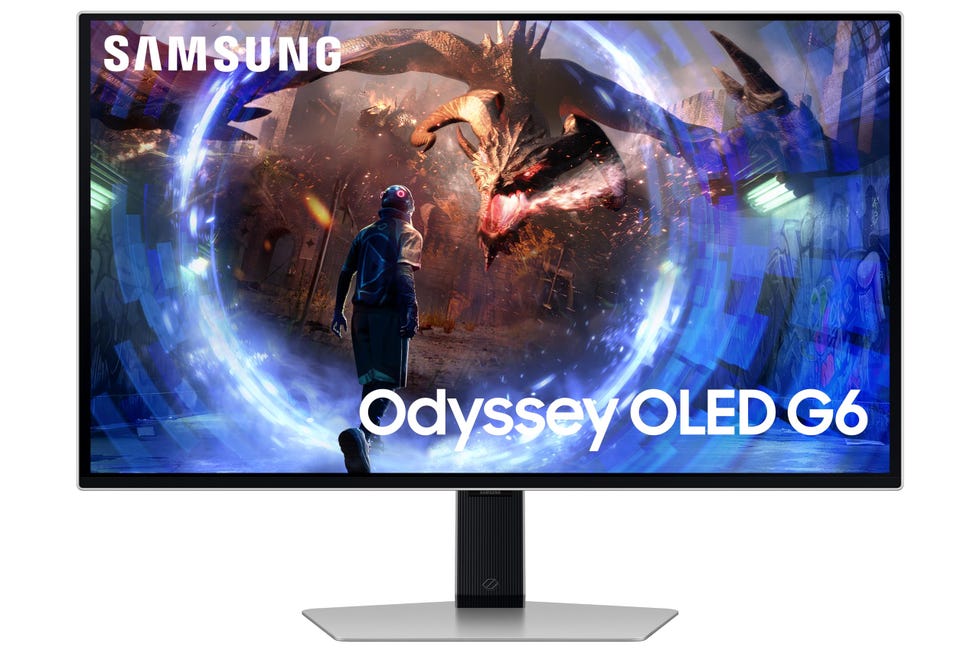Looking for Game Development? This Samsung OLED Monitor is a Must Have
As far as I can tell, there are two types of PC gamers. Those who care about images and those who care about performance. Gaming monitors under growth usually do one or the other. They either spit out 4K images or render a smooth picture at an uncapped frame rate, often both.
For me, performance is always king. That’s the reason to play on PC over console. I’ve done most of the gaming in my life on consoles, so I would know. When it comes to a high-performance gaming monitor, there is nothing better for the low price of $900 than Samsung’s Odyssey G6 OLED.
It’s a stunning 27-inch 1440p monitor—the perfect size for competitive gamers or anyone working in an apartment. No matter how powerful your CPU and GPU are, the G6 can handle it, supporting different refresh rates up to 360 Hz. Your games will look great and play so smooth, you won’t even realize you’re not playing in 4K.
Start the Odyssey game
From the beginning of my time with the Odyssey G6, I saw the OLED screen as a big part of what makes it special. The picture is bright and sunny, and if you’re not used to that, it’s amazing. You launch a game from your Steam library and realize that games have never looked so good.
Game. That’s what the screen is. If you want to use it for work you can, but your work machine needs an HDMI output. (Sorry Mac users, you are not gamers and never will be.) But spreadsheets won’t let you appreciate this screenshot. To play Cyberpunk as the sun sets in the south-facing windows behind you? That’s where you’ll appreciate this OLED screen.
In particular, without OLED, Odyssey G6 has a high resolution of 2560 x 1440 pixels aka 144op aka QHD. Think of it as better than 1080p, but not 4K fidelity. That is the compromise that the monitor makes. OLED contrasts in most cases, and I’m impressed enough with its HDR settings that this shouldn’t be an issue. If you disagree and happen to have an OLED monitor, do me a favor. Boot up Minecraft then turn on ray tracing to see how much of a difference good lighting makes compared to a few extra pixels.
Renewal Fees Are Too High For Us To Monitor And Evaluate
What the monitor lacks in resolution, it more than makes up for in refresh rate. Closely tied to framerate, refresh rate (measured in hertz) is a measure of how many times an image refreshes per second. Basically, it’s a measure of smoothness. If you’re here, I’m probably preaching to the band, but let me do that. Most console games would love to hit 60fps. PCs can exceed that, so much so that monitor standards have changed to 144Hz to support frame rates of 120fps and higher.
The Odyssey G6, by comparison, has a refresh rate of up to 360 hertz. That’s an absurd number of frames. When it came to testing, we couldn’t even push the machine hard enough to hit half the maximum power. The variable refresh rate kept our PC games stutter-free, no matter what our games were running on. In layman’s terms, this monitor makes any input lag invisible.
Unlock the Power of Your Console
You need a powerful (read: expensive) PC to get the most out of this monitor. It’s just the details. But if you also have a PlayStation 5 or Xbox Series X, you may have access to functionality that most TVs don’t support. I tried using a PS5, but the latest 2nd generation consoles support refresh rates up to 120Hz.
As a display, the OLED was a nice improvement over the QLED TVs I’ve been playing on. Even having to stay close doesn’t show loyalty. On PS5, not every game can run at 120fps, but I tried some that do and they gave me a glimpse of the possible future for gaming. Games that rely on the sense of speed benefit greatly from framerate boosting. Thwip-ing around town Spider-Man 2 or around the corner inside Gran Turismo 7 she has never looked so good or felt so smooth. If you’re in the market for a sports monitor, this is the one I’d rate the rest against.
Some Samsung Gaming Monitors We’ve Tried
There are some great gaming monitors in the Samsung Odyssey line. They happen to be on sale and I happen to try them. So, based on experience, here’s what these other monitors have to offer.
32-inch Odyssey OLED G8 (£1099 at Samsung): If you don’t want to compromise at all, this is the monitor for you. It has a 240Hz refresh rate, and yes, it does 4K. That’s right. 4K resolution and high refresh rate. Also, it’s currently two-thirds of the original price if you buy directly from Samsung, putting it almost on par with the G6.
49-inch Curved Odyssey OLED G9 (£1269 at Samsung): Singleplayers beware, once you experience the sheer immersion of this curved screen, it will be hard to go back. The size may surprise you, but once you realize that it’s just two Odyssey G6 1440p monitors that are pressed together and curved, it will start to click. Same OLED screen as the G6, same 240Hz refresh rate as the G8, double the screen.
Final Decision
If you’re looking for a new PC gaming monitor, the Samsung Odyssey may have something for you. The G6 OLED is a bright, glare-free option that’s perfect for single-player games, but it’s built primarily to help you get into fast-paced multiplayer games. If you have a PC beefy enough to take advantage of its 360Hz refresh rate, this is one of the few monitors that can keep up.
Why Do You Trust Esquire?
At Esquire, we’ve been testing and reviewing the latest and greatest brands for decades now. When it comes to technology, hands-on testing with every device and device we review is our top priority. From headphones to smartwatches, we’ve put in the work to make sure our readers know exactly what they’re buying, before they buy it.
I spent about six weeks testing the Odyssey OLED G6, playing on it using a PS5 and PC setup. Instead of doing tests and benchmarks, I used the product in a way that I think the readers of this story would do. This included hours of gaming sessions and continuous use of the HDMI ports and headphone jack. I’ve never had any technical or cognitive issues to speak of.
#Game #Development #Samsung #OLED #Monitor

